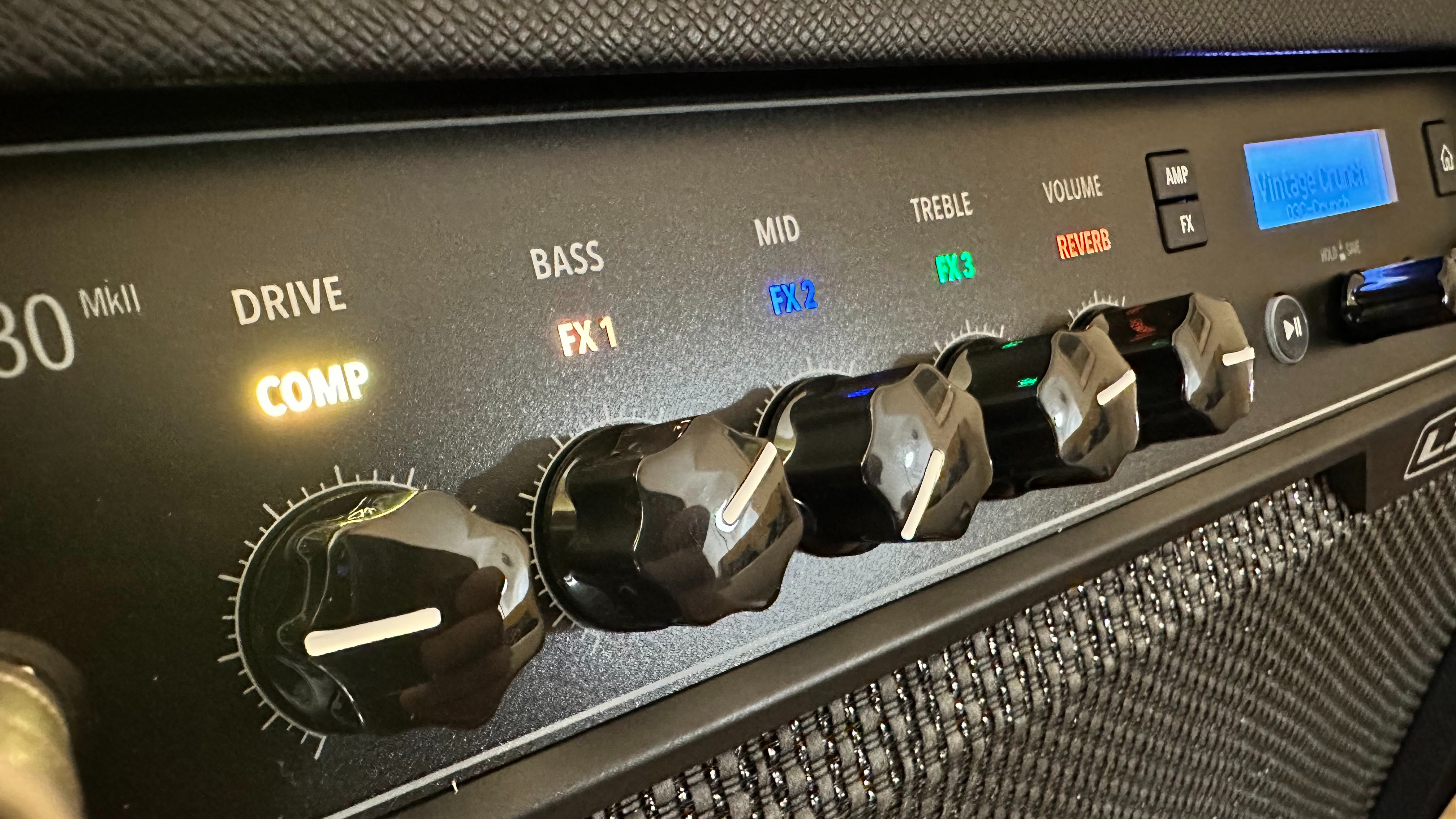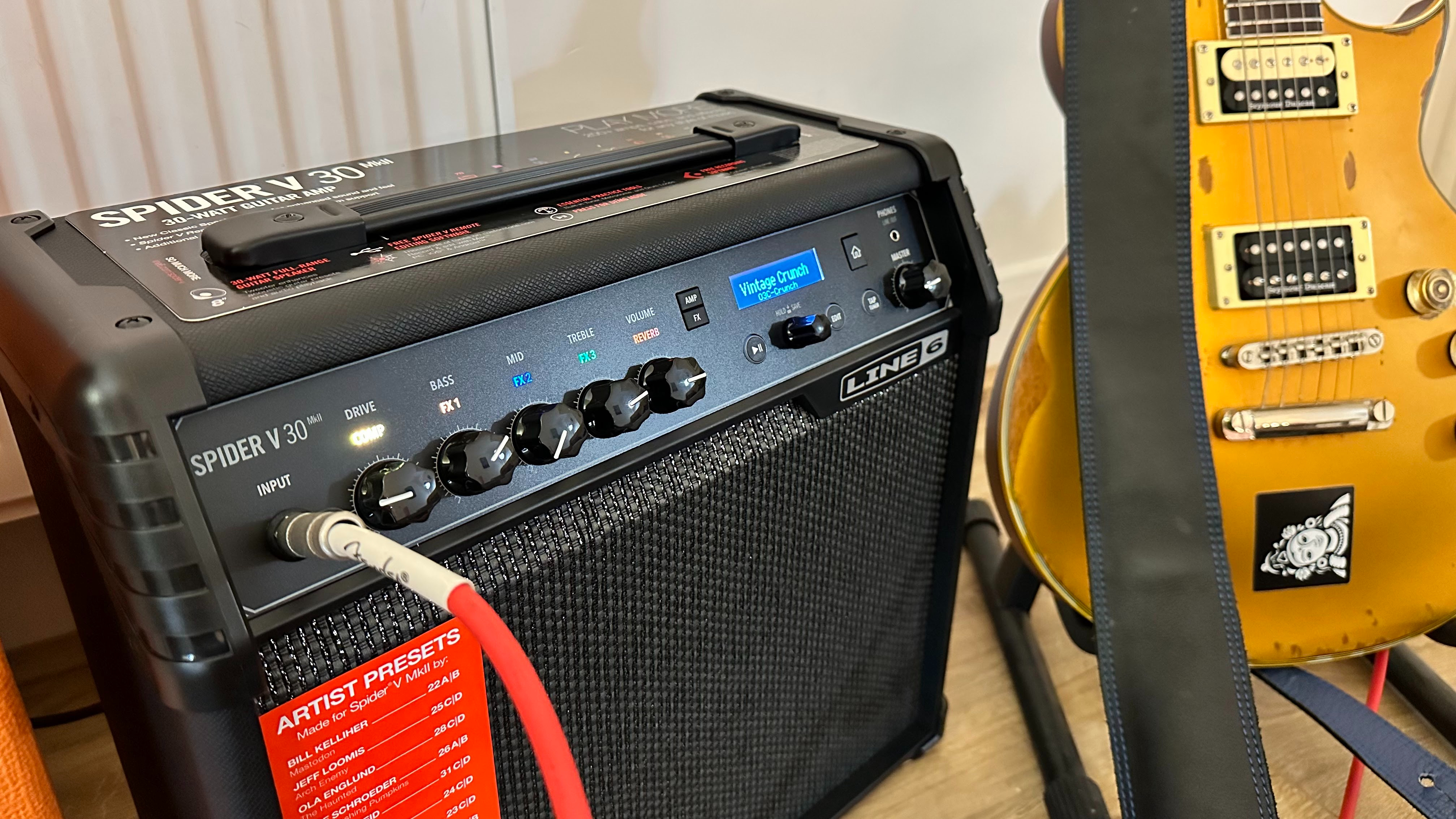
Pretty much anyone who has attempted to learn the guitar over the last 20+ years will be familiar with the Line 6 Spider. Since the launch of the first Spider in 1999, these compact, inexpensive modeling amps have become the byword in do-it-all practice machines, thanks largely to the sheer number of sounds you can get from a relatively small unit. Sure, seasoned players might look down on the kitchen sink approach to sound selection, but for the beginner, these things unlocked the ability to easily create approximations of pretty much any sound you could think of. Happy days!
Today, however, the beginners' amp market is flooded with budget modeling amps. You can credit Line 6 and the Spider range with modeling's popularity, yet it does mean that it's not the only show in town anymore. Boss, Yamaha, and Positive Grid now all offer products which give players the same box of toys, so the modern-day Spider needs to have something special to keep its place at the top table.
The Line 6 Spider V MkII lineup comprises a range of modeling amps, from a tiny 20w practice amp right the way up to a monstrous 240w version designed for performance at larger venues. Each has the same fundamental modeling tech, with myriad amps, pedals, and other sound design capabilities. There are a few differences in functionality between the various models in the range, however. The basic 20w version has no screen, for example, while higher-tier models have XLR connectivity for input directly to a desk or PA, but overall the Spider range's core capabilities translate across the roster.
But is the Line 6 Spider still relevant today? Read on to find out...
Performance, design and tone

Today we have what we'd call the sweet-spot model; the Spider V 30 MkII. Straight out of the box, the new Spider models look way more grown up than they used to. We can remember back in the day, these amps had quite grungey stylings along with the infamous 'insane' gain channel, whereas nowadays, you've got a much more professional-looking black box. Sensible, even. This could be Yamaha's influence, with the Japanese giant having owned Line 6 since 2013. Whatever it is, we like it and we think it demonstrates the graceful aging of the Spider series.
The front panel houses dual-function rotary knobs for the amp models' tone controls and various FX settings. Choosing different amp, pedal, and speaker models is done using a multifunctional control knob that sits underneath a basic LCD screen. You get all the usual tools you'd expect, like a metronome and tuner, and there are also connectivity options to the rear of the amp for connecting a smartphone - more on this later - and a laptop or desktop to make use of the Spider's audio interface abilities.
Essentially though, you're not going to be disappointed with either the quality or the diversity of the available sounds.
Switching between amp models is fairly intuitive. The main control knob switches quickly between different presets - you can change these to your own liking - with minimal lag between changes, while a press of the 'amp' button allows you to switch between specific amp models.
The tone controls offer a good degree of customization, and the sounds themselves are much more diverse than we had expected. You get the usual approximations of classic amps, from Fender cleans to Mesa grit, while the legendary super hi-gain setting known as the Insane channel is still there if you want it. Essentially though, you're not going to be disappointed with either the quality or the diversity of the available sounds.

Underneath the Amp button is the Effects button which allows you to start crafting a signal chain of various amps, effects and modulation. In effects mode, the front panel comes alive with attractive colored lighting, echoing the POD effects units and indicating which parameters you're controlling. Further tweaking and customizations are possible via the screen, with an impressive number of options available, and once you've created a sound you like, you can save everything for recalling later.
As is the modern way, the Spider V can connect to a complementary app, offering a more visual way to control amp and effect parameters. The app works well enough - similar to the Positive Grid Spark app - although, unlike Spark, it is not wireless. Instead, you connect your iOS or Android device directly to one of the USB slots on the rear of the amp. Now, we actually don't mind this; as good as the Spark app is, we do find its Bluetooth connectivity to be a little sketchy at times, and having a wired connection here removes that particular minor annoyance.
To the back, there is also a connection point for one of Line 6's FBV control pedalboards, so you can switch between presets and settings hands-free.
One newer feature we were impressed with was the dual-speaker modes. One mode is optimized to sound like a proper amp in the way you'd expect. The other, however, is an FRFR - full range, flat response - which doesn't color the sound in any way and is ideal for acoustic guitars or for jamming along to external sound sources via the 3.5mm aux input at the backside of the amp. It's not a huge feature and maybe won't be used by every player, but it does hint at the impressive versatility on offer with the modern-day Spider range.
Final verdict

It's in this versatility that the Spider range shows its real worth. For not a huge amount of money - relatively - you're getting a huge selection of sounds to play with in a package that has clearly been honed and refined over a long period of time.
Is it an amp you'll grow out of? Possibly, but then isn't that the point? In opting for a Spider to power your practice sessions, you're choosing a trusted brand that has sparked the careers of more than a handful of the biggest names playing today.
If, from there, you go onto higher-powered or more expensive amps in the future, then the Spider has done its job. And that, in our eyes, makes it a success and easy to recommend now - as it was 20 years ago - as one of the best practice amps available today.
Specifications
- Power: 30w
- Amp models: 78 amps and 23 cabinets
- Effects: 82 (inc reverb, drives, delays, modulation)
- Connectivity: ¼" jack input, 3.5mm aux in, headphone out, USB-A & USB-B, FBV support
- Presets: 128
- Contact: Line 6







